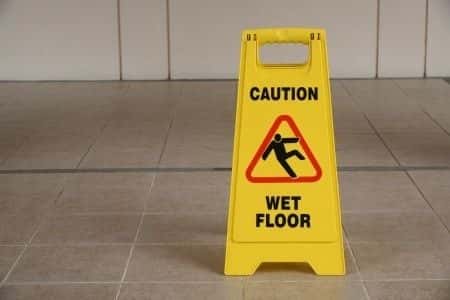This case involves a slip and fall on a stairway that had been built out of slate. The original stairway made use of textured strips to provide additional traction for pedestrians using the stairway, however these had been removed during renovations undertaken shortly before the accident, leaving naked stone on each of the steps. In addition, the stone was installed by the property owner without any type of permitting. There was a small amount of water on the stairway at the time of the accident, and it was alleged that the water, along with the inherently slippery nature of the stone stairway, made the staircase highly dangerous. The Plaintiff suffered a number of permanent injuries as a result of the fall.
Question(s) For Expert Witness
1. Please discuss your background in conducting coefficient of friction testing, as it applies to stone staircases.
Expert Witness Response E-008805
The vast majority of slip-and-falls that occur on stone or ceramic tile result from wet or otherwise lubricated surfaces and how they interact with the injured party's footwear. The property of a floor that makes it slip-resistant in the presence of a lubricating contaminant, such as water or oil, is its surface roughness. That is, the surface roughness must be tall enough and sharp enough to extend upward through the lubricating film sufficiently to engage the shoe bottom in a manner not unlike sandpaper. Careful investigation and detailed preparation are often the keys to success with slip and fall injury cases. Surface testing can provide unbiased, objective walkway test data for your slip and fall litigation. It is imperative that proper testing protocol be followed. A property owner is only liable for an accident on his/her property if the homeowner was negligent and his or her negligence was a cause of the accident. The condition that caused the injury had to have been unreasonably unsafe, and stair accidents can often be the result of negligence, in ways people don't even notice. In this particular case a surface lacking slip resistance, combined with a foreign substance on the stairs, was the likely cause of this accident. After testing by a tribometer, it is clear that this surface would have been unsafe at the time of the accident.
About the author
Joseph O'Neill
Joe has extensive experience in online journalism and technical writing across a range of legal topics, including personal injury, meidcal malpractice, mass torts, consumer litigation, commercial litigation, and more. Joe spent close to six years working at Expert Institute, finishing up his role here as Director of Marketing. He has considerable knowledge across an array of legal topics pertaining to expert witnesses. Currently, Joe servces as Owner and Demand Generation Consultant at LightSail Consulting.

